In today’s world, there are only a handful of ways to grow your business with zero or little investment. The most notable examples are Content Marketing and Social Media.
Not only do these marketing channels need zero investment to start, but they can also significantly impact the growth of your business if managed well.
We’ll discuss social media in another article; today, we’ll discuss content marketing and how to keep track of it using Simple Analytics.
- What is content marketing?
- Content marketing types: TOFU, MOFU, BOFU
- Tracking the effectiveness of content marketing
- Success metrics
- Importance of content analytics
- Conclusion
What is content marketing?
We first need to understand the concept of content marketing and why it's worthwhile to start tracking it properly.
As the name suggests, content marketing is the process of leveraging your content to market your brand or product. This can be done by writing blogs that show up when people search for them on Google or by posting things on forums and websites like Reddit.
As the whole process is cost-effective, unlike ads, content marketing is an excellent mode of marketing for startups who don’t have much money to spend on marketing but still need good results.
Content marketing also comes with several other benefits:
- Improved SEO: By regularly posting high-quality content, you can improve your website's search engine optimization, which can help you rank higher on search engine results pages.
- Increased brand awareness: Sharing valuable content can help you build a relationship with your audience and increase brand awareness.
- Lifelong benefits: Content marketing can provide lifelong benefits to your brand or product, as the content you create can continue to drive traffic and generate leads for years.
Here are two examples of how we leveraged content marketing at Simple Analytics:
[1] Our blog on why Google Analytics is banned in Italy went viral on Reddit and generated 35K clicks to our website, link to stats
[2] Our blog on can you use Google Analytics without cookies is number 1 in Google for multiple keywords and drives, on average 800 clicks from Google to our website, link to stats
Content marketing types: TOFU, MOFU, BOFU
Now that the benefits are clear, it’s time to move ahead and understand the different content marketing types to track performance accurately.
Content in content marketing is divided into three different types:
- Top of the funnel (TOFU)
- Mid of the funnel (MOFU)
- Bottom of the funnel (BOFU).
The funnel here represents the conversion flow through various types of content for the user.
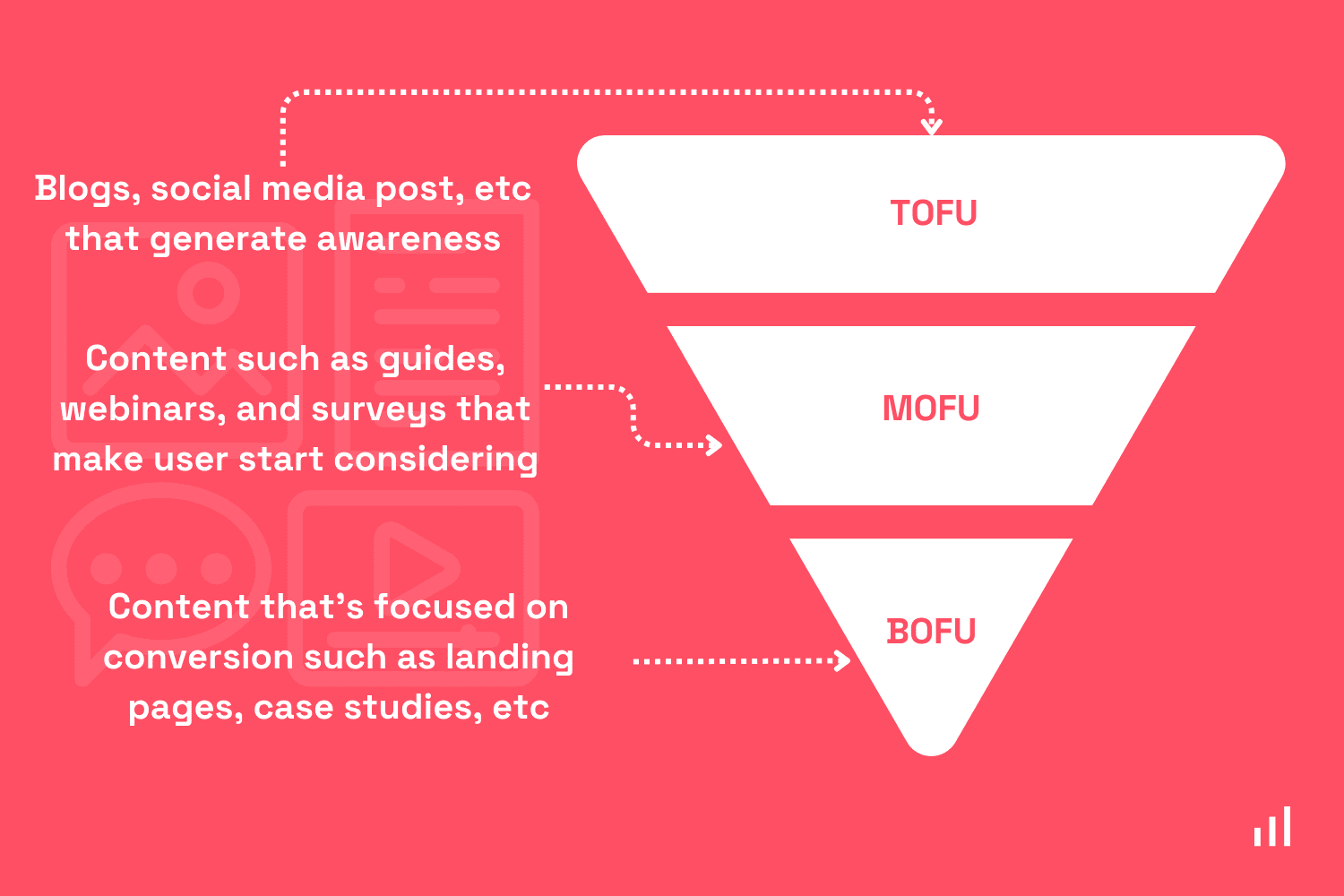
Top of the funnel (TOFU) is the awareness stage, where general content is written to get the brand name out so that the target audience starts to notice your brand. Another use case of TOFU content is to send the readers to MOFU content pages as part of the content marketing flow.
Mid of the funnel (MOFU) is the consideration stage, where a bit of specialized content in the product niche is shared; this is done to explain the benefits of the product category and process to the reader. The primary goals of MOFU content are to make the user start thinking about the product requirement and send them to BOFU pages.
Bottom of the funnel (BOFU) is the decision or conversion stage and mainly consist of landing pages but can also sometimes consists of other forms of content like case studies or webinar.
Let’s try to understand this with a real-life example from a Simple Analytics user:
Here’s how Arnob, founder of Olvy, a Feedback Management SaaS startup, is leveraging Simple Analytics to track its content marketing goals.
Olvy has divided its content types into TOFU, MOFU, and BOFU.
For Olvy, TOFU is general content like blogs that talk about broad kinds of stuff which are still relevant to their target audience. MOFU is specialized content that includes some actionable content and a use case of Olvy. BOFU for Olvy primarily is their landing page, and the final goal is either a meeting getting booked or a user signing up for a free trial.
All these stages are tracked in Simple Analytics using the goals feature. We’ll show you how to do this in straightforward steps.
Tracking the effectiveness of content marketing
Now that we understand the benefits and the types of content marketing, let's talk about how we can track the effectiveness of our efforts.
This is especially important to understand if your efforts are getting any results. To track this, we’ll use the Simple Analytics functions feature and set up goals in our dashboard to track users' flow.
Setup tracking script
This would require adding small JS snippets on your pages based on category. But before that, let's understand how the script works.
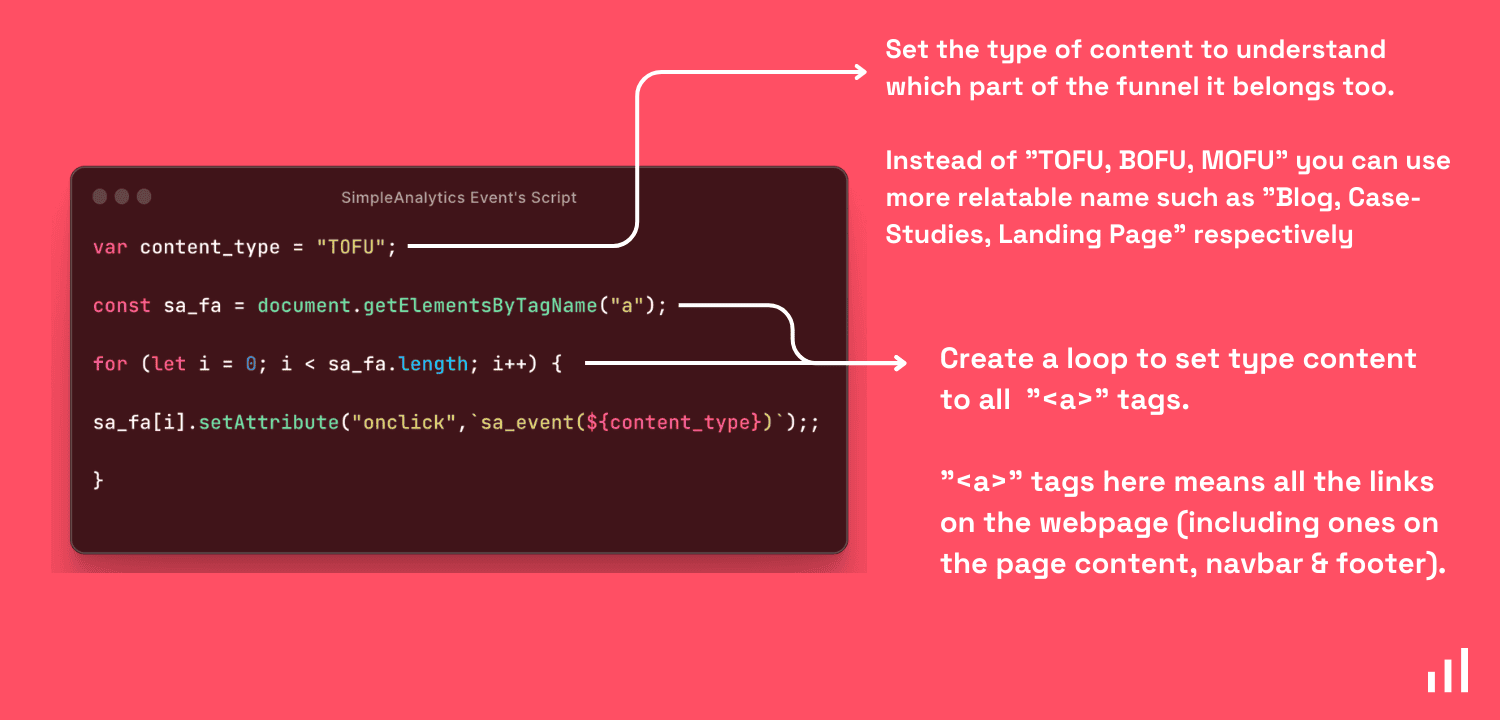
<!--SCRIPT TO BE ADDED IN END OF TOFU PAGES-->
<script>
var content_type = "TOFU";
var sa_fa = document.getElementsByTagName("a");
for (let i = 0; i < sa_fa.length; i++) {
sa_fa[i].setAttribute("onclick", `sa_event(${content_type})`);
}
</script><!--SCRIPT TO BE ADDED IN END OF MOFU PAGES-->
<script>
var content_type = "MOFU";
var sa_fa = document.getElementsByTagName("a");
for (let i = 0; i < sa_fa.length; i++) {
sa_fa[i].setAttribute("onclick", `sa_event(${content_type})`);
}
</script><!--SCRIPT TO BE ADDED IN END OF BOFU PAGES-->
<script>
var content_type = "BOFU";
var sa_fa = document.getElementsByTagName("a");
for (let i = 0; i < sa_fa.length; i++) {
sa_fa[i].setAttribute("onclick", `sa_event(${content_type})`);
}
</script>This script will automatically add Simple Analytics events on all links with TOFU, MOFU, and BOFU tag, which we’ll use later.
You can set directories to segregate content types if you don’t want to add these scripts to each page manually. Let me show you how.
<script>
var urlParams = window.location.pathname;
if (urlParams.startsWith("/blog")) {
var content_type = "TOFU";
}
if (urlParams.startsWith("/case-studies")) {
var content_type = "MOFU";
}
if (urlParams.startsWith("/pricing") || urlParams.startsWith("/features")) {
var content_type = "BOFU";
}
var sa_function = document.getElementsByTagName("a");
for (let i = 0; i < sa_fa.length; i++) {
sa_fa[i].setAttribute("onclick", `sa_event(${content_type})`);
}
</script>Once the script is installed, the Simple Analytics dashboard will start events named “TOFU,” “MOFU,” and “BOFU.”
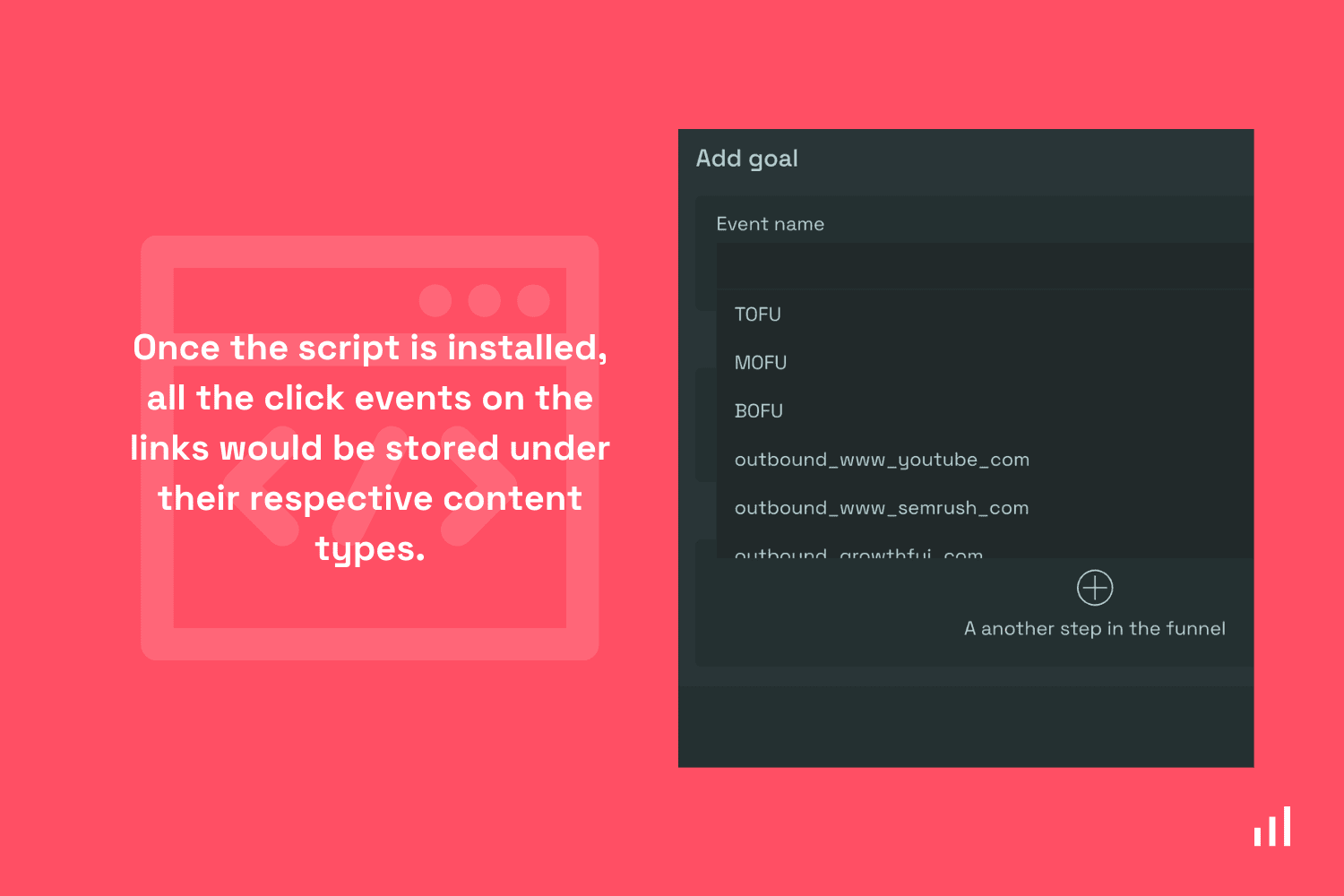
Setup dashboard
Now the next step is pretty simple; we need to set up goals on the Simple Analytics dashboard to start monitoring the performance of our content marketing efforts.
Navigate to the “Goals” tab and click “Add goal” to set up as shown below.
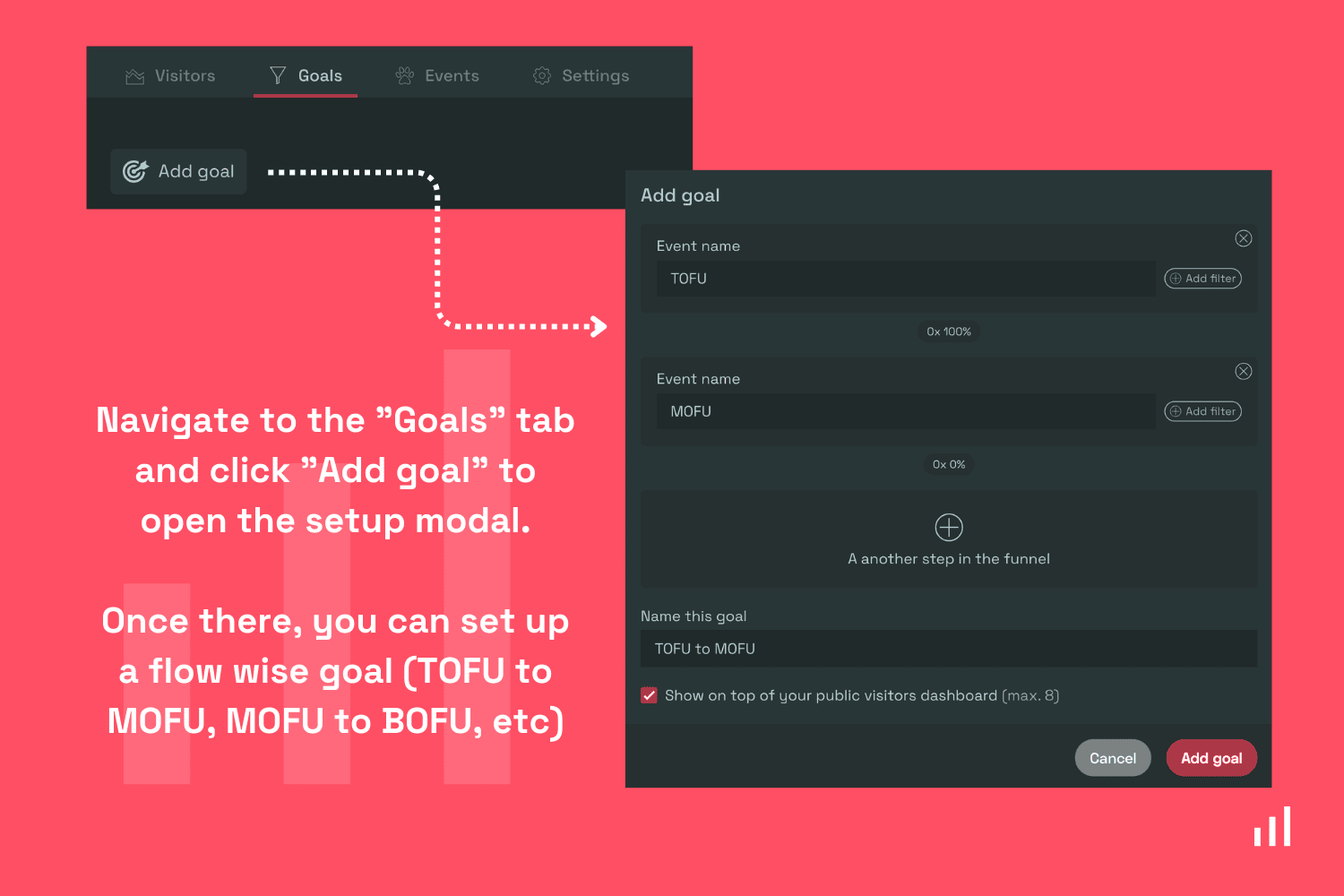
Once the setup is done, the same will start showing up on your Simple Analytics dashboard. Below is an example of how it would look like.
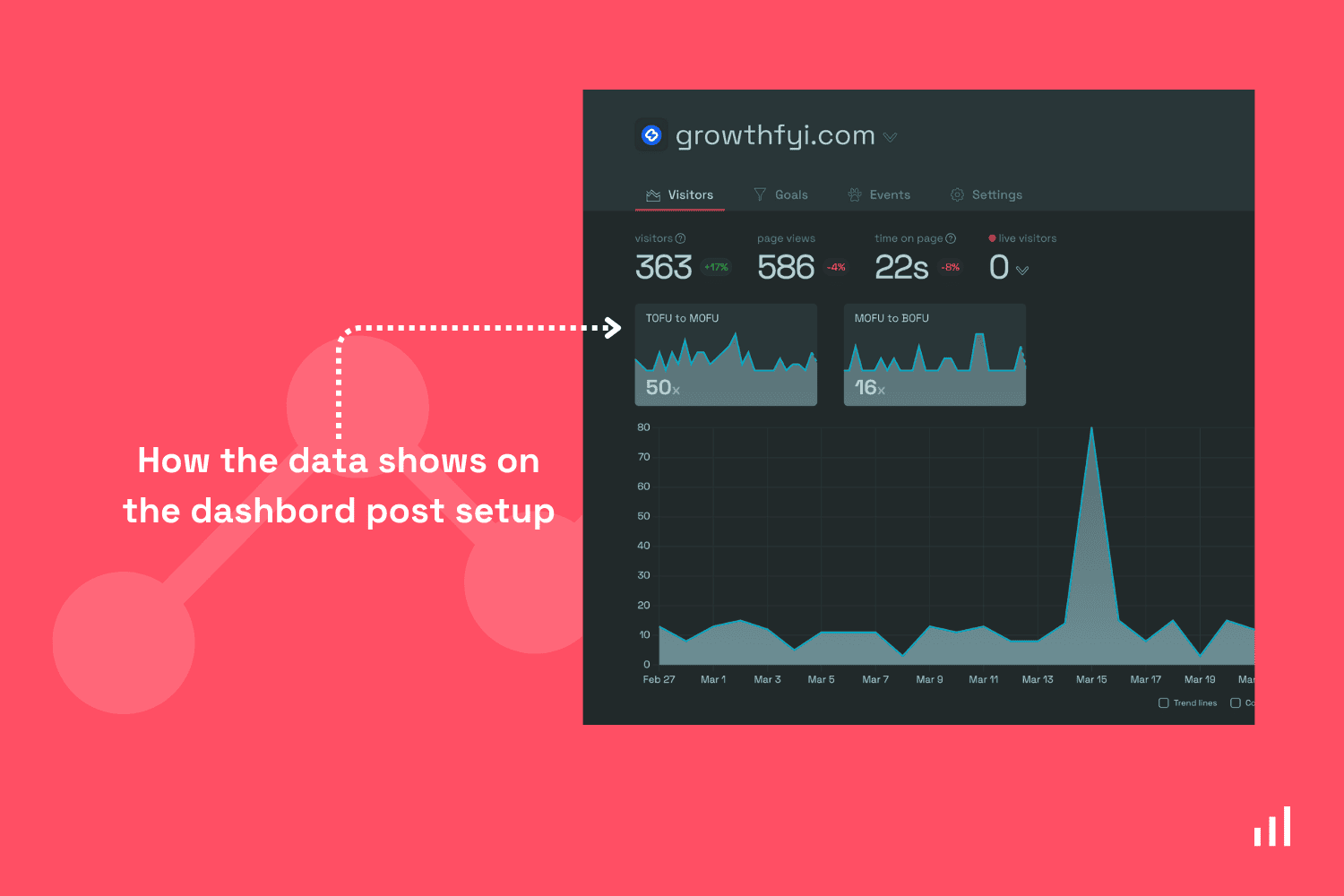
Success metrics
Now that you are tracking the content conversion flow and everything, you might wonder what’s a reasonable conversion rate through various stages.
So to answer this, there isn’t any defined number as it depends on your niche, audience, business, etc. So you should aim for an achievable number and constantly try to improve it.
Below is the data on the industry-wide website conversion rate.
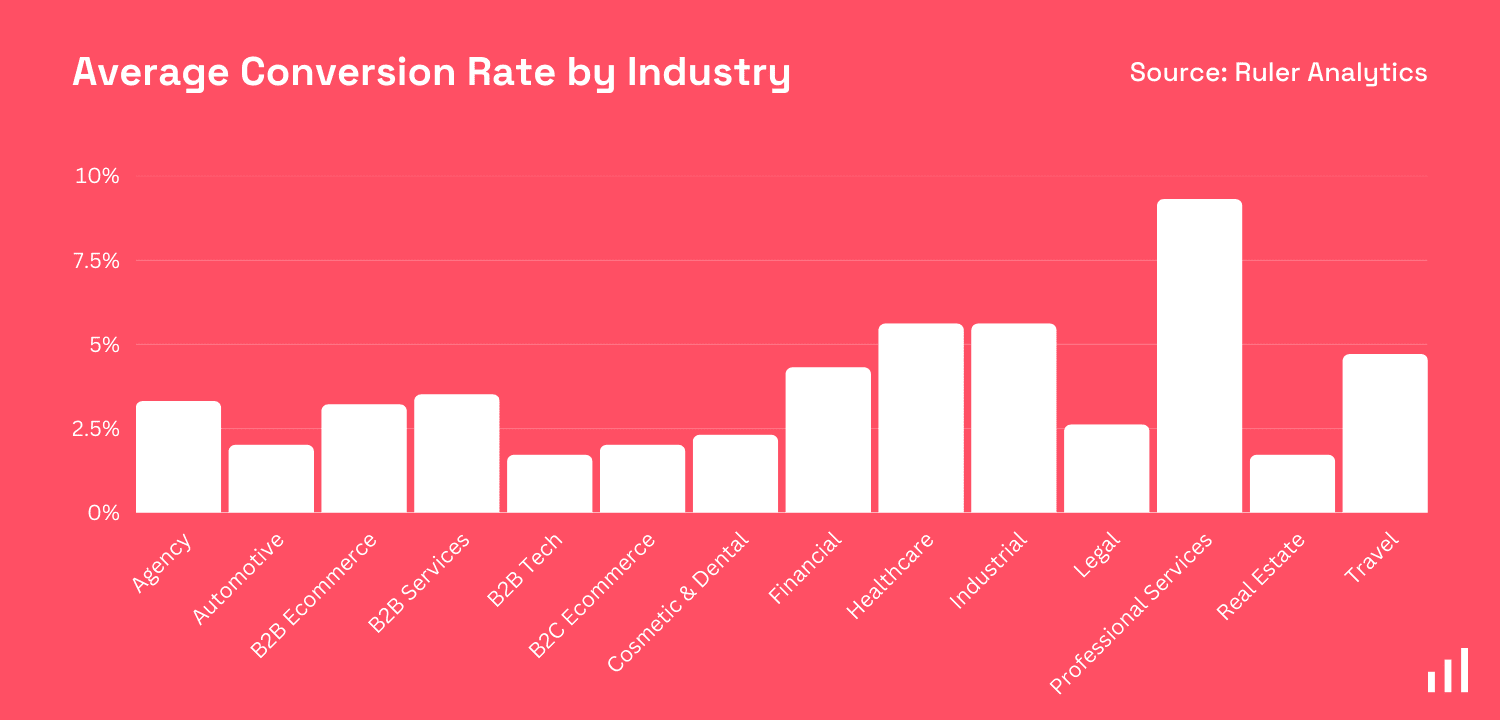
Importance of content analytics
The importance of content analytics simply can’t be ignored. It’s the only metrics that helps you understand what content your audience and potential customers love and what they don’t.
By using this data, you can build your content calendar that has a higher chance of driving organic traffic, conversion and also reducing bounce rate for content pages. Think of it as a content metric that helps you take data-driven decisions in content marketing.
Conclusion
By using Simple Analytics functions and setting up goals in your dashboard, you can easily monitor the flow of users through your content conversion funnel. Don't forget to aim for an achievable conversion rate and constantly strive to improve it.
Tracking the effectiveness of your content marketing strategy is crucial, and Simple Analytics can help you do just that while being 100% GDPR-compliant.
Also take note that on July 1st, you can no longer use the current version of Google Analytics. You need to migrate to its more complex version or find an alternative solution. We offer a Google Analytics importer to make sure you don't lose your historical data. Feel free to give us a try

